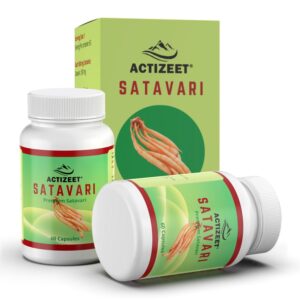Tribulus Terrestris, also known as puncture vine, is a flowering plant native to warm climates like the Mediterranean and certain parts of Asia. This remarkable herb has gained recognition for its potential medicinal properties and has been used for centuries in traditional medicine systems. With its spiky fruits and small yellow flowers, Tribulus Terrestris may not look like much at first glance, but it packs a powerful punch when it comes to health benefits.
Table of Contents
ToggleOverview of Tribulus Terrestris as a Medicinal Herb
Tribulus Terrestris has caught the attention of researchers and herbal enthusiasts due to its wide array of bioactive compounds. The key players in this herb are saponins, which are naturally occurring chemical compounds found in various plants. These saponins are believed to be responsible for many of the therapeutic effects associated with Tribulus Terrestris.
Beyond saponins, Tribulus Terrestris also contains flavonoids, alkaloids, and sterols that contribute to its medicinal properties. The combination of these bioactive components makes it a plant worthy of exploration for those seeking natural remedies.
Historical Use of Tribulus Terrestris in Traditional Medicine
The use of Tribulus Terrestris dates back thousands of years in traditional medicine practices across different regions. Ancient Ayurvedic texts from India mention the herb’s potential benefits for various health conditions, including sexual disorders, urinary tract problems, and cardiovascular issues. Similarly, Chinese traditional medicine has long recognized the healing powers of this herb.
It has been used as an energy booster and aphrodisiac while also being employed for its diuretic properties to support kidney health. Tribulus Terrestris has even found its way into traditional European medicine, where it has been used to alleviate symptoms of urinary and reproductive system disorders.
The historical use of Tribulus Terrestris in diverse traditional medicine systems underscores its long-standing reputation as a valuable herbal remedy. Now, modern research is shedding light on the scientific basis behind these ancient beliefs, further cementing its significance in the field of alternative medicine.
Understanding Diabetes
Definition and Types of Diabetes (Type 1 and Type 2)
Diabetes is a chronic metabolic disorder characterized by high blood sugar levels due to the body’s inability to properly regulate insulin, a hormone responsible for controlling glucose metabolism. There are two main types of diabetes: Type 1 and Type 2.
Type 1 Diabetes: Type 1 diabetes, also known as juvenile-onset or insulin-dependent diabetes, occurs when the pancreas fails to produce enough insulin.
This condition is often diagnosed at a young age, and individuals with Type 1 diabetes rely on regular insulin injections or an insulin pump to manage their blood sugar levels. It is considered an autoimmune disease, where the immune system mistakenly attacks and destroys the insulin-producing cells in the pancreas.
Type 2 Diabetes: Type 2 diabetes, also referred to as adult-onset or non-insulin-dependent diabetes, is characterized by insulin resistance or impaired insulin function. In this condition, although the pancreas initially produces sufficient insulin, the body’s cells do not respond effectively to it.
As a result, glucose builds up in the bloodstream instead of being absorbed into cells for energy production. Type 2 diabetes is commonly associated with lifestyle factors such as obesity, sedentary behavior, unhealthy diet choices, genetics, and age.
Causes and Risk Factors Associated with Diabetes
The causes of both types of diabetes can vary: Type 1 Diabetes Causes: The exact cause of Type 1 diabetes remains unknown; however, it is believed to be triggered by a combination of genetic predisposition and environmental factors.
Certain viruses or exposure to toxins may trigger an autoimmune response that leads to the destruction of pancreatic beta cells responsible for producing insulin. Type 2 Diabetes Causes: While genetics play a role in determining susceptibility to Type 2 diabetes, lifestyle factors are the primary drivers.
Being overweight or obese, leading a sedentary lifestyle, consuming a diet high in processed foods and sugar, and having a family history of diabetes increase the risk of developing Type 2 diabetes. Additionally, other risk factors that contribute to the development of both types of diabetes include age (Type 1 commonly occurs in children and young adults while Type 2 is more common in middle-aged and older individuals), ethnic background (certain ethnicities such as African Americans, Hispanics, Native Americans have a higher risk), gestational diabetes during pregnancy, and certain medical conditions like polycystic ovary syndrome (PCOS) or metabolic syndrome.
Understanding the different forms of diabetes and their causes is crucial in effectively managing the condition. By identifying risk factors and adopting appropriate preventive measures or treatment strategies, individuals can take control of their health and minimize the impact of diabetes on their lives.
Role of Tribulus Terrestris in Diabetes Management
Potential benefits of Tribulus Terrestris for diabetes
When it comes to managing diabetes, Tribulus Terrestris has shown promising potential. This remarkable herb has been traditionally used for centuries in various cultures to alleviate symptoms associated with this metabolic disorder.
One of the key benefits of Tribulus Terrestris is its ability to help regulate blood sugar levels. By influencing insulin secretion and enhancing insulin sensitivity, this herb aids in controlling glucose metabolism and maintaining stable blood glucose levels.
Furthermore, Tribulus Terrestris possesses anti-inflammatory properties that can benefit individuals with diabetes. Chronic inflammation is closely linked to the development and progression of diabetes complications.
The active compounds found in Tribulus Terrestris have been observed to suppress pro-inflammatory cytokines, thus reducing overall inflammation levels within the body. This anti-inflammatory effect may contribute to improved glycemic control and reduced risk of complications associated with diabetes.
Scientific evidence supporting the use of Tribulus Terrestris in diabetes management
Scientific studies have shed light on the effectiveness of Tribulus Terrestris as a complementary therapy for managing diabetes. Research conducted on both animal models and human subjects has consistently demonstrated positive outcomes.
In a study published in the Journal of Ethnopharmacology, diabetic rats treated with a tribulosin-enriched fraction derived from Tribulus Terrestris experienced significant reductions in blood glucose levels compared to those without treatment. Moreover, clinical trials involving individuals with type 2 diabetes have also yielded encouraging results for Tribulus Terrestris supplementation.
A randomized controlled trial conducted by researchers from India found that participants who received a standardized extract of this herb exhibited improvements in several glycemic parameters compared to those receiving a placebo. These findings emphasize the potential role that Tribulus Terrestris can play in the management of diabetes.
However, it’s important to note that further research is needed to establish the optimal dosage and long-term effects of this herb. As with any treatment, consulting with a healthcare professional before incorporating Tribulus Terrestris into your diabetes management plan is essential for personalized and safe usage.
Saponins: The Key Bioactive Compounds in Tribulus Terrestris
When it comes to the medicinal properties of Tribulus Terrestris, the spotlight falls on its rich content of saponins. Saponins are a class of natural compounds found in various plants and are known for their diverse health benefits. In Tribulus Terrestris, these bioactive substances play a crucial role in managing diabetes and promoting overall well-being.
Saponins’ Role in Regulating Blood Sugar Levels
The saponins present in Tribulus Terrestris exhibit remarkable potential in regulating blood sugar levels, making them particularly valuable for individuals with diabetes. These plant compounds work by stimulating insulin secretion from pancreatic beta cells. Insulin is a hormone responsible for promoting the uptake and utilization of glucose by cells throughout the body.
By increasing insulin secretion, saponins facilitate the efficient transport of glucose from the bloodstream into cells, where it is utilized for energy production. This helps to prevent elevated blood sugar levels, which is a common concern among those living with diabetes.
Mechanisms by Which Saponins May Improve Insulin Sensitivity
In addition to their effect on insulin secretion, saponins found in Tribulus Terrestris may also contribute to improved insulin sensitivity—a key factor in managing diabetes. Insulin sensitivity refers to how efficiently cells respond to insulin signals and take up glucose from the bloodstream.
Studies suggest that these saponin compounds interact with cell receptors involved in insulin signaling pathways. This interaction enhances cellular responses to insulin, leading to improved glucose uptake by muscle and adipose tissue cells.
By promoting better insulin sensitivity, Tribulus Terrestris may help individuals with diabetes maintain balanced blood sugar levels more effectively. Furthermore, saponins have been found to inhibit certain enzymes involved in carbohydrate metabolism, such as alpha-amylase and alpha-glucosidase.
By inhibiting these enzymes, saponins slow down the breakdown of complex carbohydrates into simple sugars, thereby reducing the rate at which glucose enters the bloodstream after a meal. This mechanism can contribute to better glycemic control in individuals with diabetes.
The active compounds present in Tribulus Terrestris work synergistically to regulate blood sugar levels and improve insulin sensitivity. By incorporating this remarkable herb into diabetes management strategies, individuals may find additional support in controlling their condition more effectively and promoting overall health and well-being.
Impact on Blood Sugar Control
How Tribulus Terrestris affects blood glucose levels:
Tribulus Terrestris has shown promising effects in regulating blood sugar levels, making it a valuable herbal remedy for diabetes management. One of the key mechanisms through which Tribulus Terrestris exerts its influence is by increasing insulin secretion.
Insulin is a crucial hormone that helps our body utilize glucose effectively. By stimulating the pancreas to produce more insulin, Tribulus Terrestris aids in bringing down elevated blood glucose levels, which is particularly beneficial for individuals with Type 2 diabetes. Regulation of glucose metabolism through increased insulin secretion:
Through its active compounds, including saponins, Tribulus Terrestris promotes the release of insulin from pancreatic beta cells. This increase in insulin availability assists in transporting glucose from the bloodstream into cells where it can be utilized as an energy source. By enhancing glucose metabolism, Tribulus Terrestris plays a significant role in normalizing blood sugar levels and reducing the risk of diabetic complications. Inhibition of alpha-glucosidase enzyme activity:
Additionally, Tribulus Terrestris exhibits inhibitory effects on alpha-glucosidase enzymes that break down complex carbohydrates into simple sugars during digestion. By reducing their activity, this herb slows down carbohydrate absorption and prevents rapid spikes in blood sugar levels after meals. This further contributes to better glycemic control and supports overall diabetes management.
Anti-inflammatory and Antioxidant PropertiesThe role of inflammation and oxidative stress in diabetes:
Inflammation and oxidative stress play significant roles in the development and progression of diabetes. Chronic low-grade inflammation disrupts insulin signaling pathways and impairs glucose regulation. Furthermore, excessive production of reactive oxygen species (ROS) leads to cellular damage and exacerbates diabetic complications such as cardiovascular disease and neuropathy. How Tribulus Terrestris reduces inflammation and oxidative stress:
Tribulus Terrestris possesses remarkable anti-inflammatory and antioxidant properties, making it an excellent herbal ally in combating these detrimental effects. By suppressing the release of pro-inflammatory cytokines, Tribulus Terrestris helps to alleviate inflammation within the body. This anti-inflammatory action contributes to improved insulin sensitivity and reduced insulin resistance. Suppression of pro-inflammatory cytokines:
Studies have shown that Tribulus Terrestris can inhibit the production of pro-inflammatory cytokines such as tumor necrosis factor-alpha (TNF-α) and interleukin-6 (IL-6). These cytokines are known to induce systemic inflammation, which can impair insulin signaling and contribute to insulin resistance. By reducing their levels, Tribulus Terrestris aids in dampening inflammatory processes associated with diabetes. Enhancement of antioxidant defense systems:
Moreover, Tribulus Terrestris exhibits potent antioxidant activity by enhancing the body’s defense systems against oxidative stress. The bioactive compounds present in this herb scavenge harmful free radicals and protect cells from oxidative damage. This antioxidative effect not only helps combat diabetic complications but also promotes overall health and well-being.
Other Health Benefits Associated with Diabetes Management
Improvement in lipid profile (cholesterol, triglycerides):
Beyond its impact on blood sugar control, Tribulus Terrestris offers additional health benefits for individuals managing diabetes. Research suggests that this herb can help improve lipid profiles by reducing total cholesterol levels and triglyceride concentrations. Maintaining optimal lipid levels is crucial for preventing cardiovascular complications commonly associated with diabetes. Potential weight management effects:
Weight management is a vital aspect of diabetes management, particularly for individuals with Type 2 diabetes who often struggle with obesity or excess weight. Tribulus Terrestris has been studied for its potential role in weight management, showing promising effects in reducing body weight and body fat. These outcomes can contribute to improved glycemic control and a reduced risk of diabetes-related complications.
Conclusion
Tribulus Terrestris holds significant potential as a natural remedy for diabetes management. Its ability to regulate blood sugar levels through increased insulin secretion and inhibition of alpha-glucosidase enzyme activity makes it a valuable tool in maintaining glycemic control.
Additionally, the herb’s anti-inflammatory and antioxidant properties aid in reducing inflammation, oxidative stress, and insulin resistance associated with diabetes. Moreover, Tribulus Terrestris offers benefits such as improving lipid profiles and potentially aiding in weight management, further enhancing overall health outcomes.
By incorporating Tribulus Terrestris into their lifestyle choices, individuals managing diabetes can potentially experience a holistic approach to their well-being. While further research is still needed to fully understand its mechanisms of action and optimal usage guidelines, the promising evidence surrounding Tribulus Terrestris provides hope for those seeking natural alternatives to support their diabetic journey with enhanced blood sugar control and improved overall health.
Related Products
-
Himalayan Shilajit, Pure shilajit, Shilajit, SHUDDH SURYA TAPI SHILAJIT
Rated 4.74 out of 5₹4,950.00Original price was: ₹4,950.00.₹3,950.00Current price is: ₹3,950.00. Incl. GST ADD TO CART Buy Now -
Rated 4.86 out of 5
₹2,400.00Original price was: ₹2,400.00.₹1,600.00Current price is: ₹1,600.00. Incl. GST ADD TO CART Buy Now -
Rated 4.82 out of 5
₹2,400.00Original price was: ₹2,400.00.₹1,600.00Current price is: ₹1,600.00. Incl. GST ADD TO CART Buy Now -
Rated 4.84 out of 5
₹2,400.00Original price was: ₹2,400.00.₹1,600.00Current price is: ₹1,600.00. Incl. GST ADD TO CART Buy Now
-
Rated 4.00 out of 5
₹2,400.00Original price was: ₹2,400.00.₹1,600.00Current price is: ₹1,600.00. Incl. GST ADD TO CART Buy Now -
Rated 4.80 out of 5
₹2,400.00Original price was: ₹2,400.00.₹1,600.00Current price is: ₹1,600.00. Incl. GST ADD TO CART Buy Now -
Rated 4.71 out of 5
₹2,400.00Original price was: ₹2,400.00.₹1,600.00Current price is: ₹1,600.00. Incl. GST ADD TO CART Buy Now -
Rated 0 out of 5
₹2,400.00Original price was: ₹2,400.00.₹1,600.00Current price is: ₹1,600.00. Incl. GST ADD TO CART Buy Now
POPULAR PRODUCT CATEGORIES
Related posts:
- Safed Musli: A Natural Supplement For Diabetes Management
- Moringa Powder: A Natural Remedy for Diabetes?
- Harnessing the Power of Amla Powder for Diabetes Management: A Natural Approach
- Emblica Officinalis: A Natural Remedy for Diabetes
- Syzgium Cumini For Diabetes – Natural Way To Combat Diabetes
- Berberidaceae for Diabetes: Natural Remedy Revealed
- Diabetes-Control Blood Sugar Naturally
- Terminalia Bellirica for diabetes – A Primordial Medicinal Herb


















